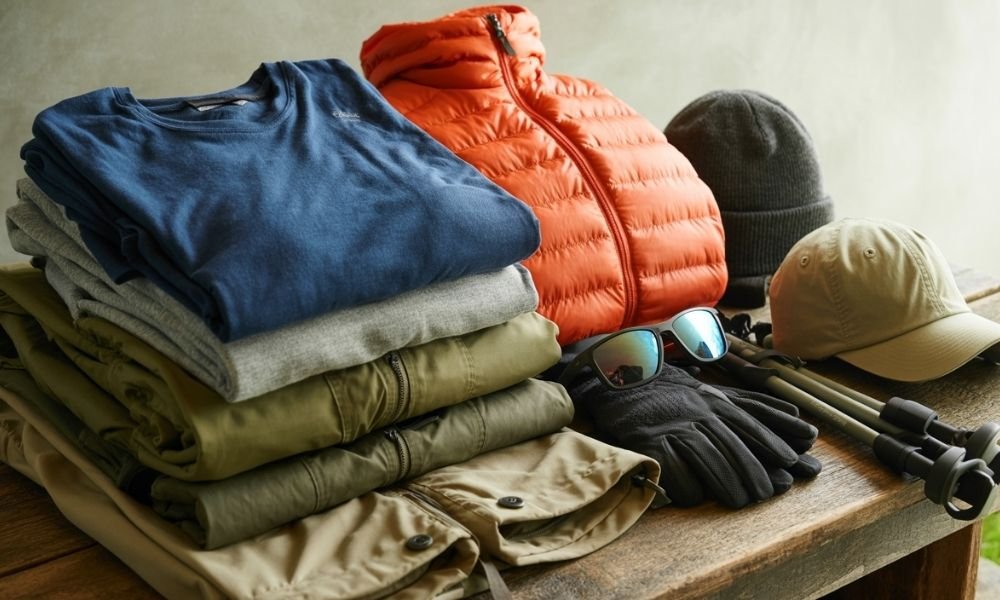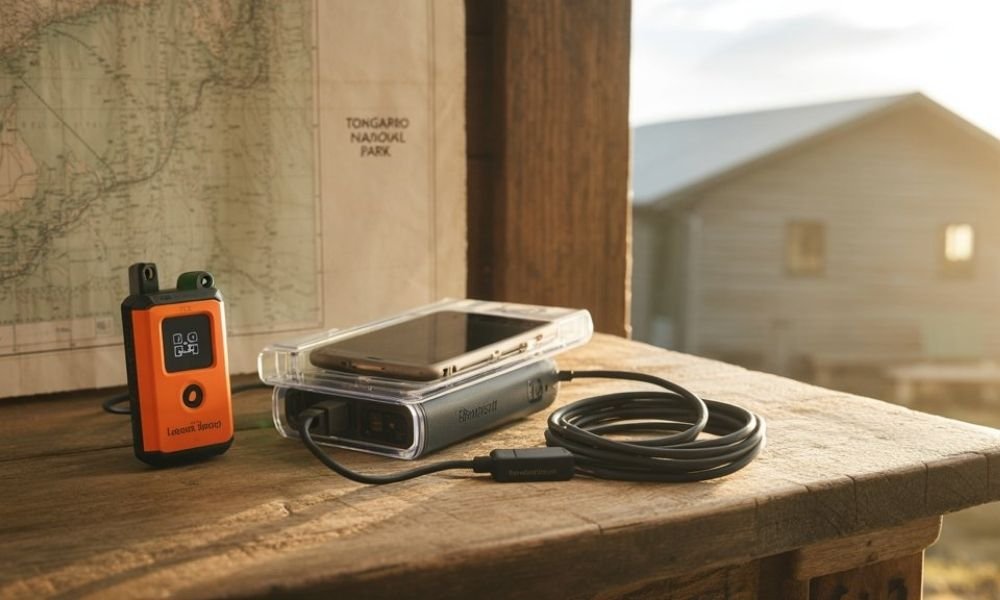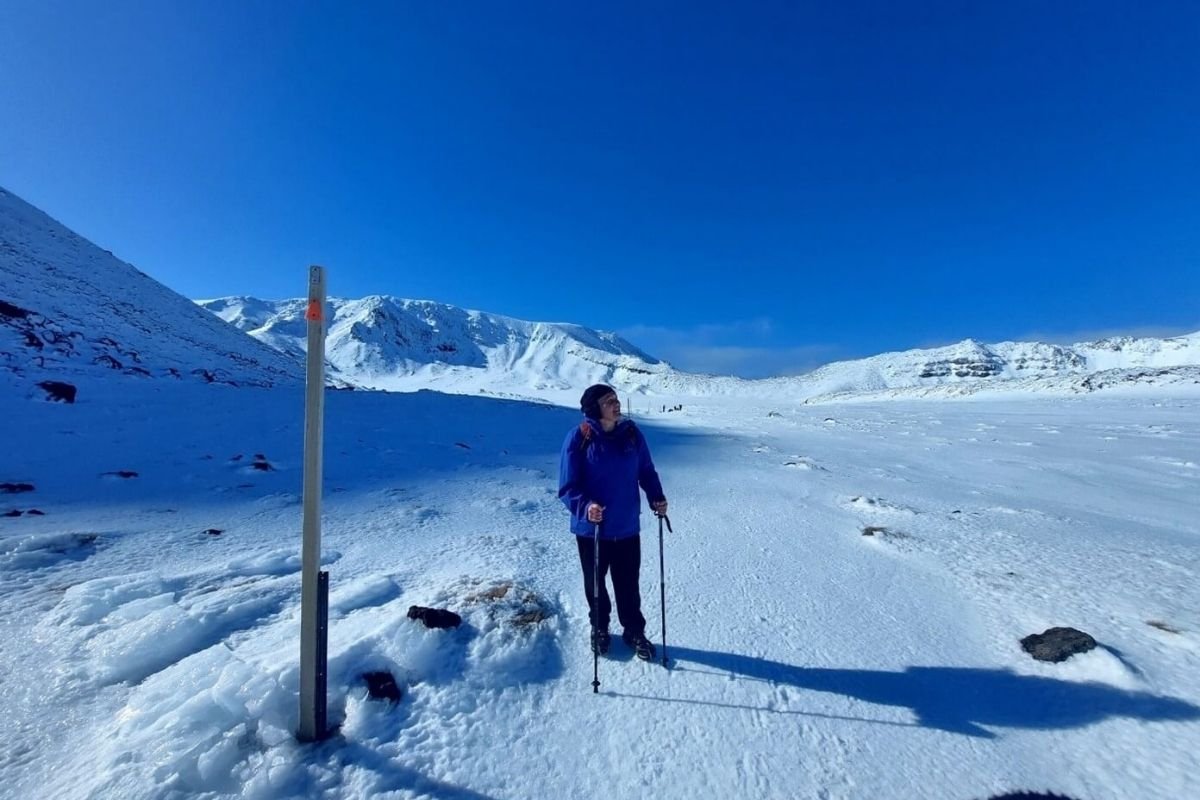Hiking in Aotearoa – New Zealand is an unforgettable experience, offering rugged peaks, volcanic terrain, pristine lakes, and dense native forests. But it also comes with one non-negotiable rule: be prepared. Whether you’re a seasoned tramper or just starting out, understanding our ever-changing weather, packing the right gear, and planning your route well can make all the difference. This guide covers the essentials for staying safe, comfortable, and well-fuelled on the trail — no matter what nature throws your way.

A Personal Note from Us
Being prepared can turn a challenging hike into a rewarding one. We once hiked up to the Pinnacles on Mt Ruapehu from the bottom carpark under clear skies and sunshine. By the time we reached the top, the clouds had rolled in, wrapping everything below us in white. We took a few photos and began our descent, joining a group of around 12 hikers. Within minutes, we were caught in a full whiteout. Thankfully, our good friend Gav—an experienced hiker—had pre-set a GPS route. We carefully retraced our steps back down to the Sky Waka, taking each step with caution and staying in constant communication. It was a powerful reminder of how quickly conditions can change in the mountains, and why experience, good gear, and planning ahead can make all the difference.
What Makes Hiking in Aotearoa – New Zealand So Unique?

From volcanic landscapes to alpine ridgelines and lush native forests, hiking in Aotearoa offers more than just pretty views — it demands respect for nature’s unpredictability. Knowing how to prepare properly will give you confidence on the trail, and possibly even save your life.
Understanding the Seasons and Conditions

rule? Never underestimate how quickly conditions can change, and plan your trip with that in mind.
Table of Contents
Essential Weather Preparedness
Ask any seasoned Kiwi tramper and they’ll tell you: the weather here can turn from “sweet as” to wild within minutes. It’s not just about staying dry—it’s about making it home safely.
Check multiple forecast sources:
- MetService (www.metservice.com)
- Mountain-Forecast.com
- Local DOC websites
- Offline-capable weather apps
Key things to watch:
- Wind speed & direction
- Rain predictions
- Day/night temperatures
- Visibility & cloud cover
- Snow & avalanche alerts
Tip: When DOC (Department of Conservation) closes a track, trust them. They know what’s coming. Even if the sky looks blue where you are, conditions up top can be brutal.
Before you hit the trail, it’s always a good idea to check the DOC (Department of Conservation) website. You’ll find important updates on track conditions, weather alerts and any closures or hazards. It’s also where you can book huts or campsites on popular multi-day hikes. Checking in first helps you stay safe, pack what you need and enjoy your adventure with confidence especially in Aotearoa’s wild and changeable backcountry.
Essential Gear for Weather Changes
Packing for every condition is essential, especially if you’re hitting alpine tracks.

Base Layer
- Merino or synthetic (not cotton!)
- Long sleeves, even in summer
- Spare set for overnight trips
Mid Layer
- Fleece or wool
- Lightweight insulated jacket
- Multiple thin layers > one bulky one
Outer Layer
- Waterproof, not water-resistant, jacket
- Waterproof pants
- Wind-resistant shell
Accessories
- Beanie, gloves, neck gaiter
- Sun hat, sunglasses
- Gaiters (for mud and rain)
- Walking poles
Communication and Safety
In remote areas, having the right tools and a plan can make a world of difference.

Essential tech:
- Personal Locator Beacon (rentable from DOC)
- Fully charged phone + waterproof case
- Power bank
- Basic weather radio
Emergency prep:
- Screenshot track maps
- Offline maps and hut locations
- Save DOC & emergency numbers
Trip Planning Tips
Advance planning is one of the most important parts of a successful hike.
Before your hike:
- Register intentions with DOC
- Text plans to a trusted friend
- Check closures and alerts
- Photograph track info boards
- Note the sunset time
During your hike:
- Monitor clouds and wind changes
- Talk with other trampers
- Be aware of shelter locations
- Adjust pace to suit conditions
- Turn back if needed — no shame in it!
Remember: Your hike isn’t worth risking your life. Conditions can shift in a heartbeat.
Best Foods to Pack
For 1-day hikes:
- day hikes:
- Trail mix, nuts, dried fruit
- Protein or muesli bars
- Sandwiches or wraps
- Fresh fruit like apples or mandarins
- Boiled eggs or cheese cubes
- Carry at least 3L of water (no refills on most tracks)
For multi-day hikes:
- Dehydrated meals and instant noodles
- Oats or instant porridge packs
- Nut butters or small peanut butter sachets
- Jerky (beef or plant-based)
- Crackers or rice cakes
- Dried fruit and seeds
- High-energy, low-weight snacks like energy chews
- Carry purification tabs or a compact water filter
No cafes, No shops. No water Refill Stations. Self-sufficiency is a must.
Optimal Seasons for Hiking

Summer (Dec–Feb)
- Early starts beat afternoon storms
- High UV even on cloudy days
- Sunscreen & raincoat = non-negotiable
Autumn (Mar–May)
- Cooler temps and colourful tracks
- Shorter daylight hours
- Frost possible in mornings
Winter (Jun–Aug)
- Only experienced hikers should attempt alpine tracks
- Carry crampons, ice axe, avalanche gear
- Very limited daylight
Spring (Sep–Nov)
- Expect snowmelt and mud
- Waterfalls are roaring
- Highly variable weather
Final Thoughts
From gear and weather to nutrition and timing, every part of your preparation matters. Hiking in Aotearoa – New Zealand is unforgettable, but the terrain demands respect. Know your limits, listen to the forecast, and never underestimate the elements. Whether it’s your first walk or your fiftieth, proper planning means a safer, more enjoyable experience.
He rā ki tua
There is a better day to come